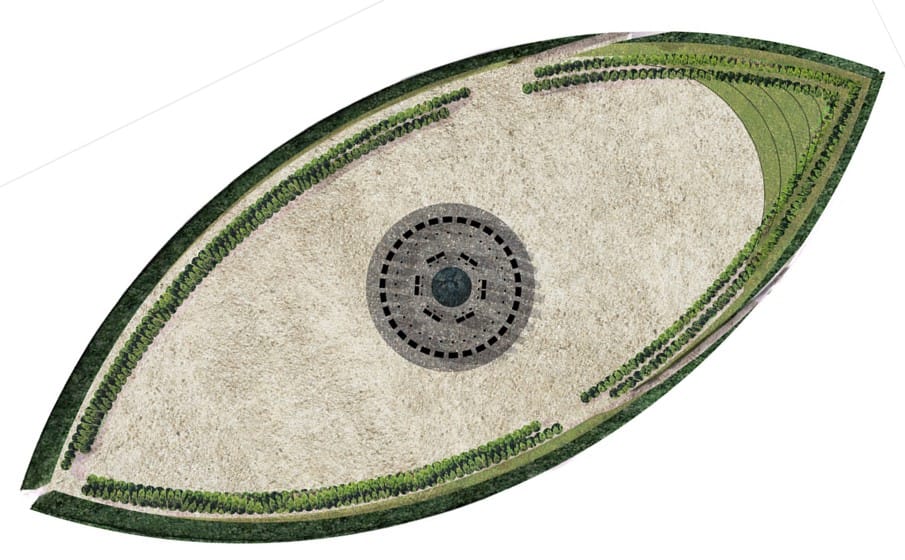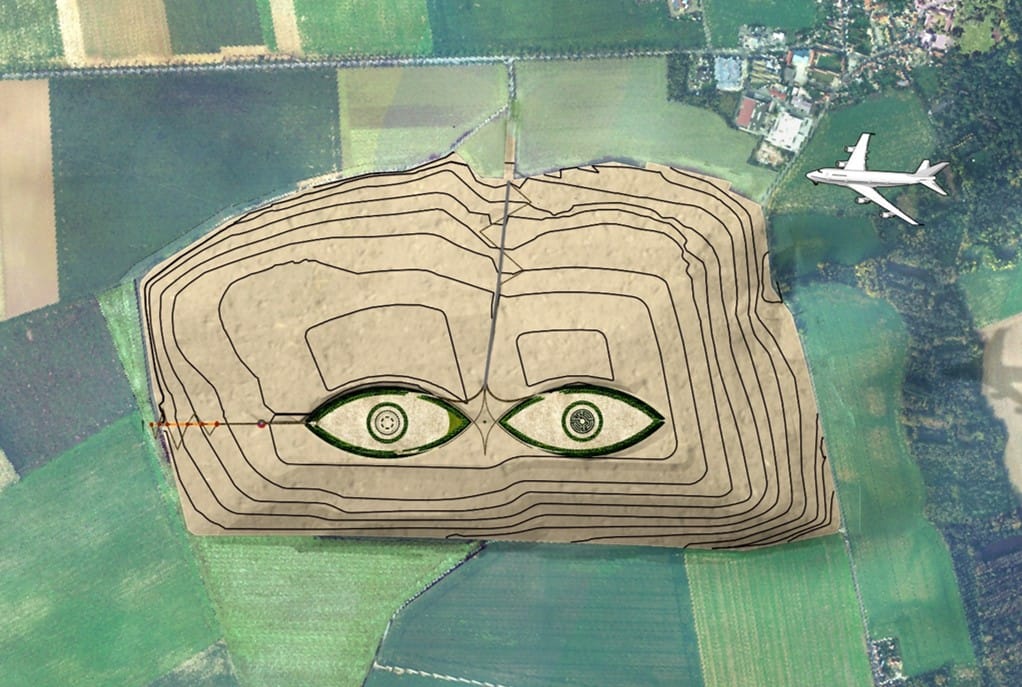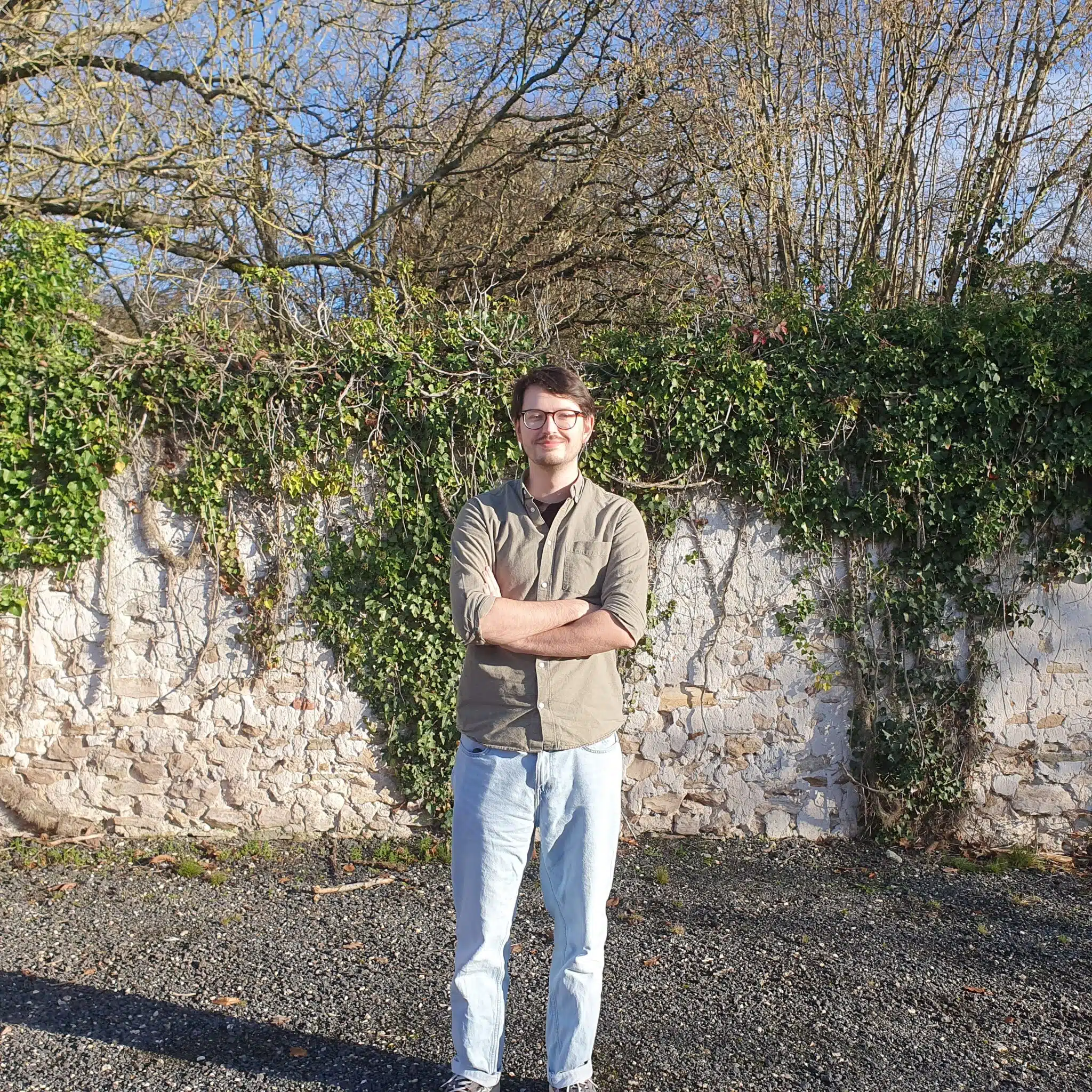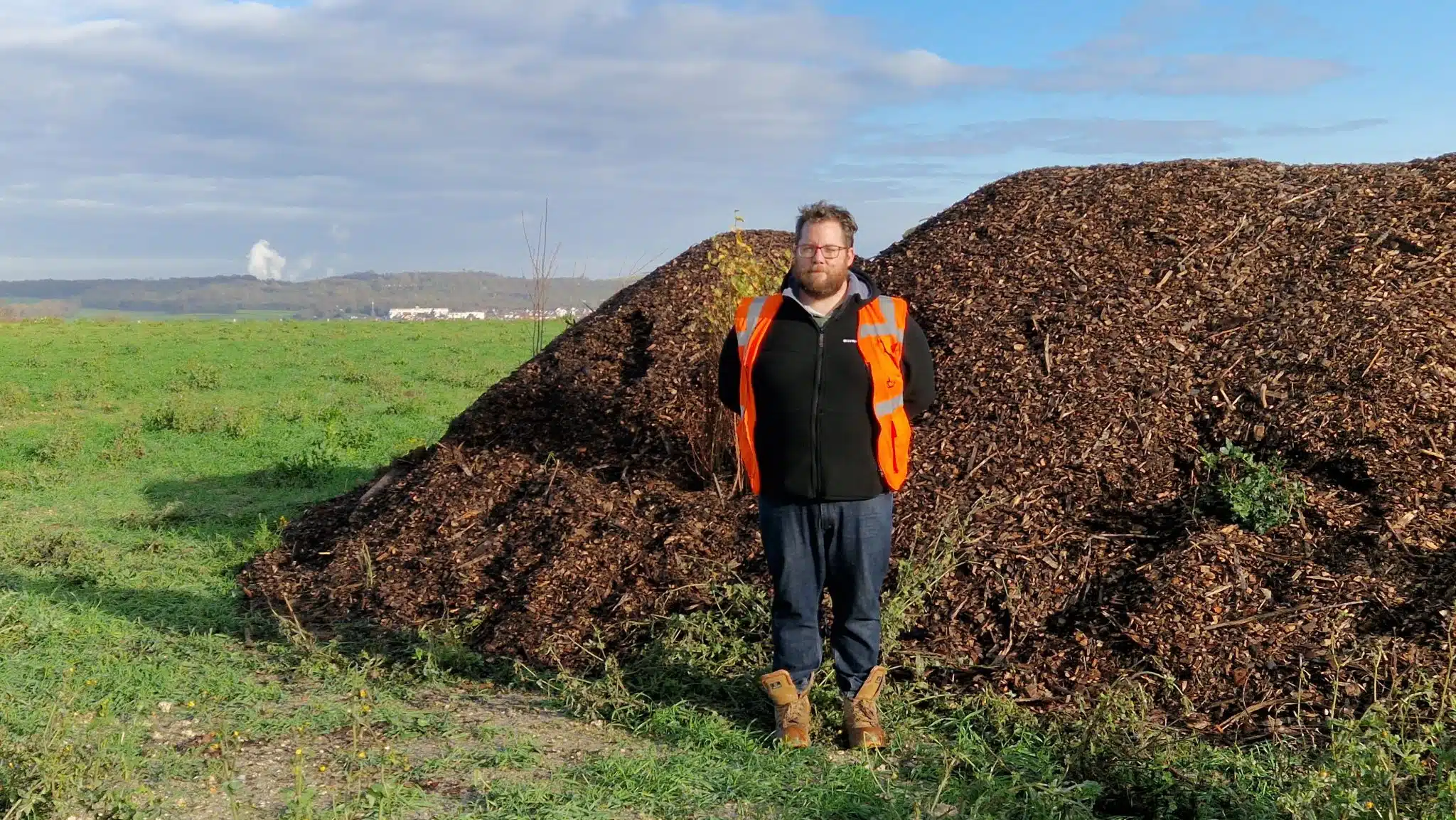Unprecedented development projects
from the collaboration between ECT and A.Grumbach, artist, architect, urban planner
How did the collaboration between ECT and AG Territoires come about?
From the meeting between Laurent Mogno, President of ECT, and Antoine Grumbach, and fundamentally, from the sharing of a strong conviction:“The earth is not a simple spoil but a formidable resource”.
This conviction leads to a long-term project: the “Belvederes of Greater Paris”. These Belvederes represent a unique artistic, tourist and leisure project on a grand landscape scale. The first of these will be “Yeux du Ciel“, a work of metropolitan Land Art on the ECT site at Villeneuve-sous-Dammartin (77) .
What makes them special? A location in the Paris region, on the border between urbanization and nature.
Their goal? Reconciling the reclamation of excavated soil (carried out by ECT) with an artistic Land Art project (designed by A. Grumbach).
LES YEUX DU CIEL: LAND ART AND LEISURE
Antoine Grumbach’s Land Art work represents two eyes, each 400 meters long. “Les Yeux du Ciel” are drawn and modeled on the ground at ECT’s Villeneuve-sous-Dammartin site. So 70 million passengers will be able to discover this work of aerial art” during take-offs and landings from Roissy CDG airport. The ECT site covers an area of 130 hectares and is 30 m high. ECT has used all the excavated soil that makes up the site. This site offers an absolutely original space for this monumental work.
More precisely, as A. Grumbach, its creator: “The eye is designed with 3 rows of trees, for a total of almost 1,200 trees. To this must be added the 12,0000 m² of embankments planted around it. At the center of one eye, there will be a plant maze and a belvedere, while the second iris will house an exhibition space”.
An emblematic project
Les Yeux du Ciel” will be open to the public, and will become a family-friendly venue. The project aims to provide local residents with cultural and leisure activities, including walks, exhibitions and concerts.
That’s why this innovative project is the subject of a development agreement between the Préfecture de la Région Île-de-France, the Communauté d’agglomération de Roissy-Pays-de-France and the 2 neighboring communes of Villeneuve-sous-Dammartin and Le Mesnil-Amelot.
In this way, “Les Yeux du Ciel” illustrates ECT’s ambition to be a major player in the circular economy of soil from construction sites in the Paris region. They symbolize the virtuous circle of reusing inert soil to create new cultural and leisure sites.
"Les Belvédères du Grand Paris": artistic, landscape and circular action
The collaboration between ECT and A.Grumbach is expanding with further projects, as part of the ambitious “Belvédères du Grand Paris” project. These Belvederes will continue to celebrate the diversity of landscapes in the Paris basin. They propose the implementation and shaping of new “manufactured hills”. Together, these hills around Paris will form an archipelago of metropolitan land art.
The volume of inert soil generated by Ile de France s construction sites is around 10 million m3 per year. This represents four Cheops pyramids (2.5 million m3). To date, however, this reality has not given rise to any artistic and cultural achievements commensurate with this state of affairs.
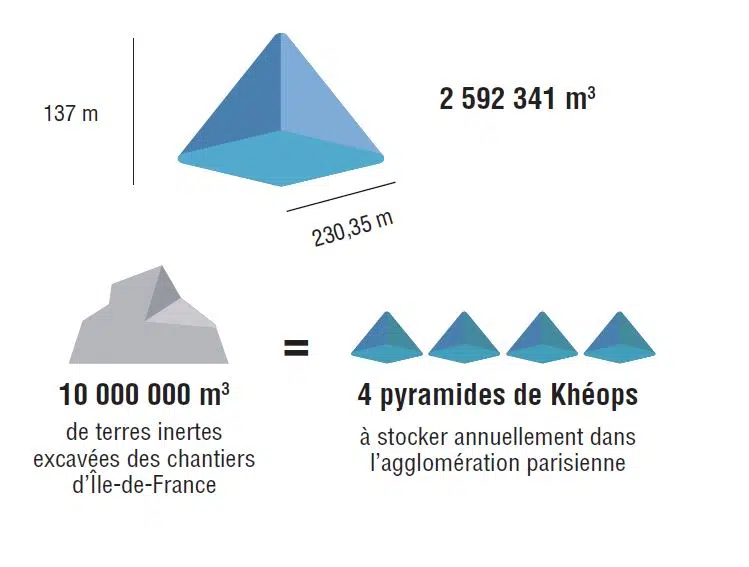
the representation of the hills
Each hill will take the form of a garden walk, with a lookout point and orientation table at the top. Amenities and facilities include amphitheatres, rest areas, walking and reading areas, gazebos, hanging gardens and open-air museums. Visitor facilities will be specially designed for coaches, cars and bicycles. Residents and tourists alike will be able to take advantage of these new opportunities to stroll, enjoy leisure activities and discover the panoramic views of the Paris region.
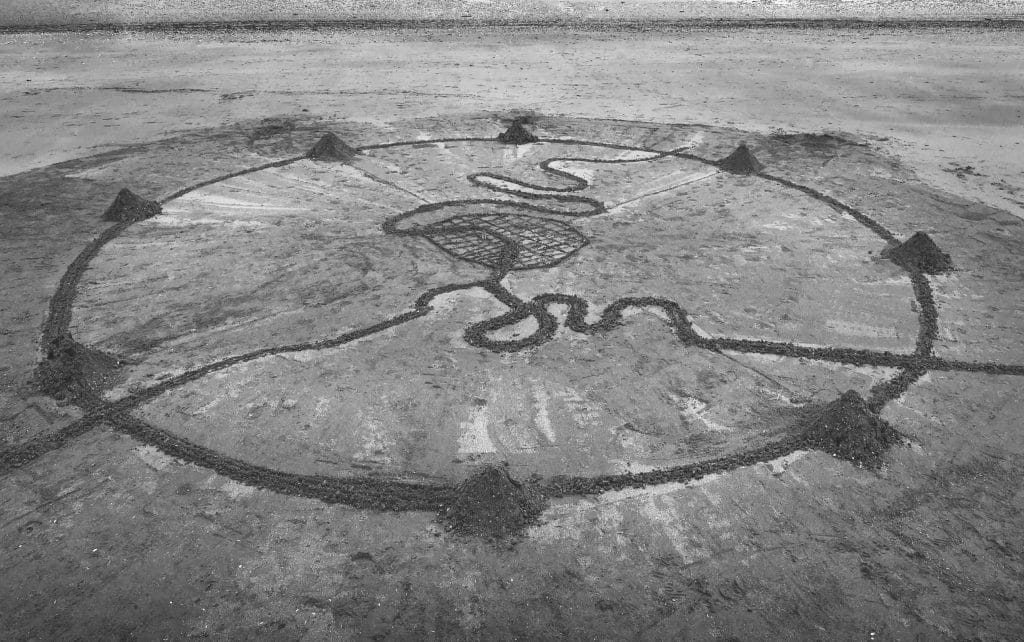
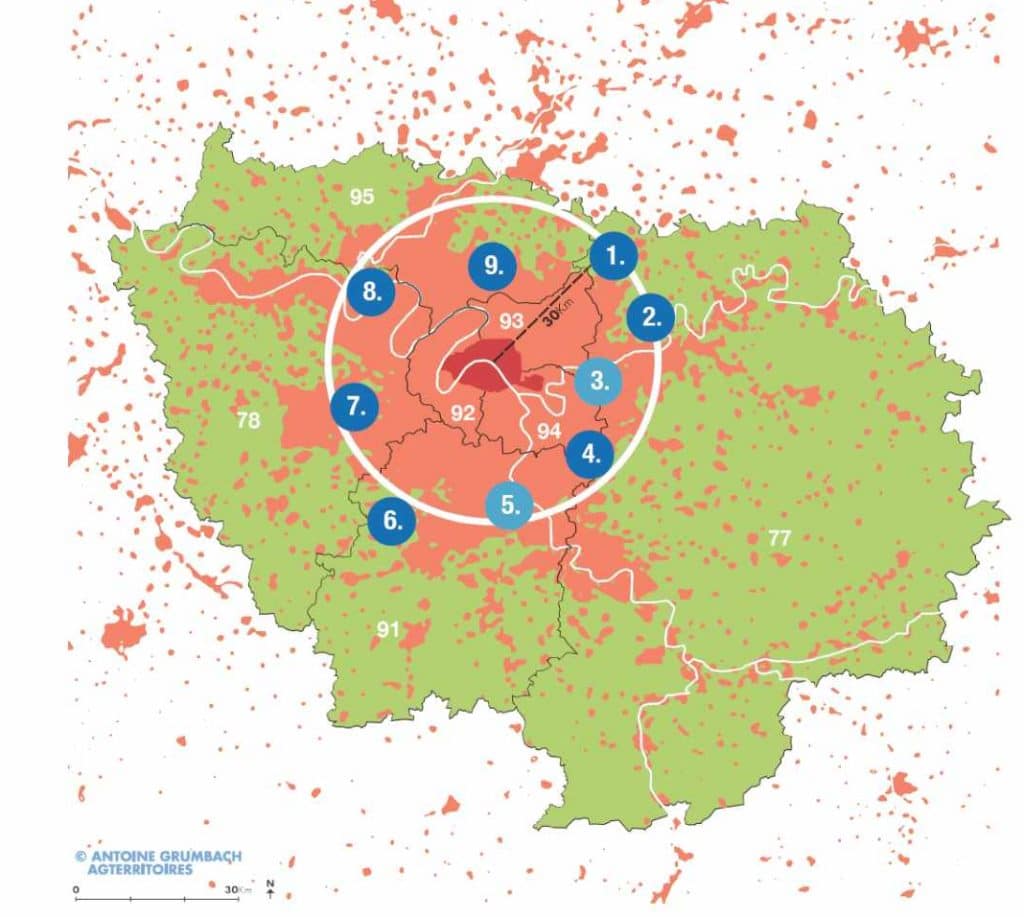
THE TOTAL NUMBER OF ARTIFICIAL HILLS
The total number of artificial hills to be created is not yet definitive: nine, ten, or twelve. They will be located within a 30 km radius of central Paris. These sites are either derelict, sensitive land, industrial wasteland or inaccessible former quarries. These Belvederes will therefore be located at the boundary between the urban area and the agricultural and forest landscapes.
Antoine Grumbach: “This multiple work of Land Art will thus highlight, on the scale of the Île-de-France region, the spectacle of the edge of urbanization at the beginning of the 21st century.”
THE BELVEDERES PROMENADE: AN INVITATION TO LANDSCAPES
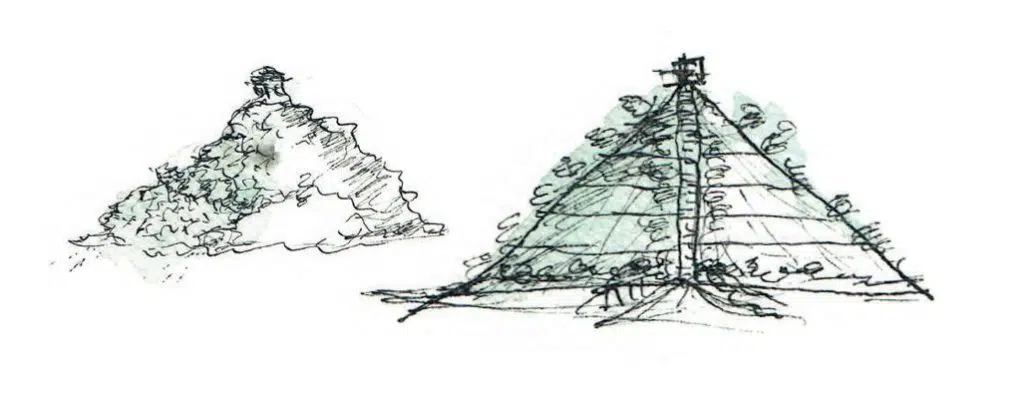
A.Grumbach: In the 19th century, Haussmann and Alphand created “Les Promenades de Paris”. At the start of the 21st century, the Belvedere promenades will embody the discovery of the variety of surprising landscapes, combining city and nature, on the outskirts of the Paris conurbation.
All visitors will find something to suit their sporting or cultural interests. A major metropolitan trail will link all the Belvederes along a 200-kilometre route. This walk is an invitation to measure the transformation of territories and the fragility of their boundaries.
Last but not least, the climb up these hills leads to the discovery of a wide variety of architectural structures. For example, a gloriette, a tempietto or a hut… and the orientation tables will indicate the origin of the land.
The Belvédères project reconciles the landscape art of Land Art with the dynamic reclamation of excavated soil. It will celebrate a form of metropolitan identity for the 21st century, combining circular industry, ecology and cultural identity.
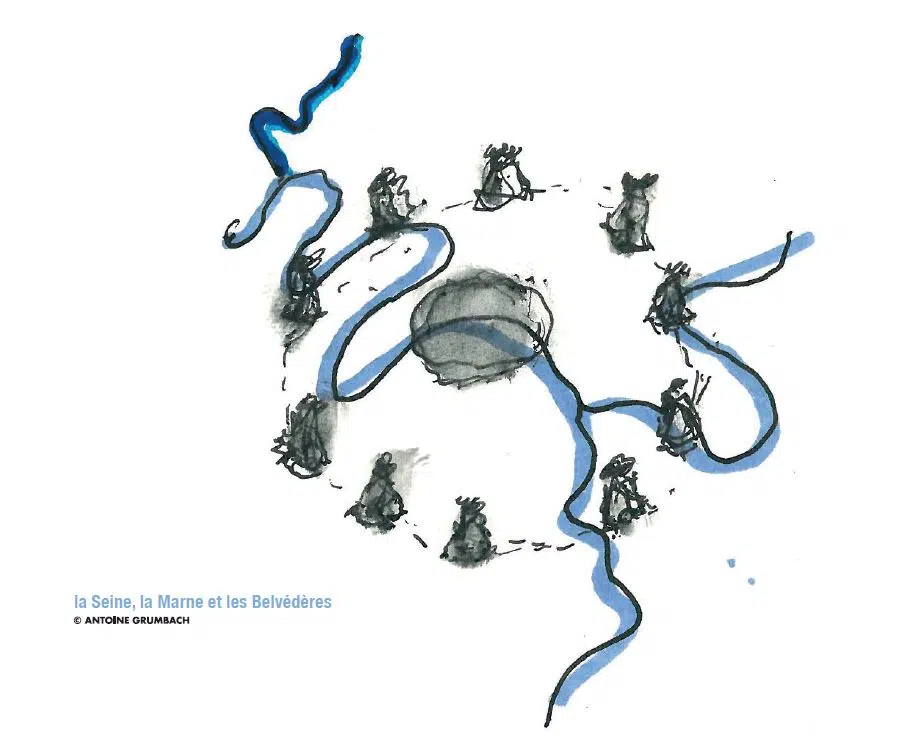
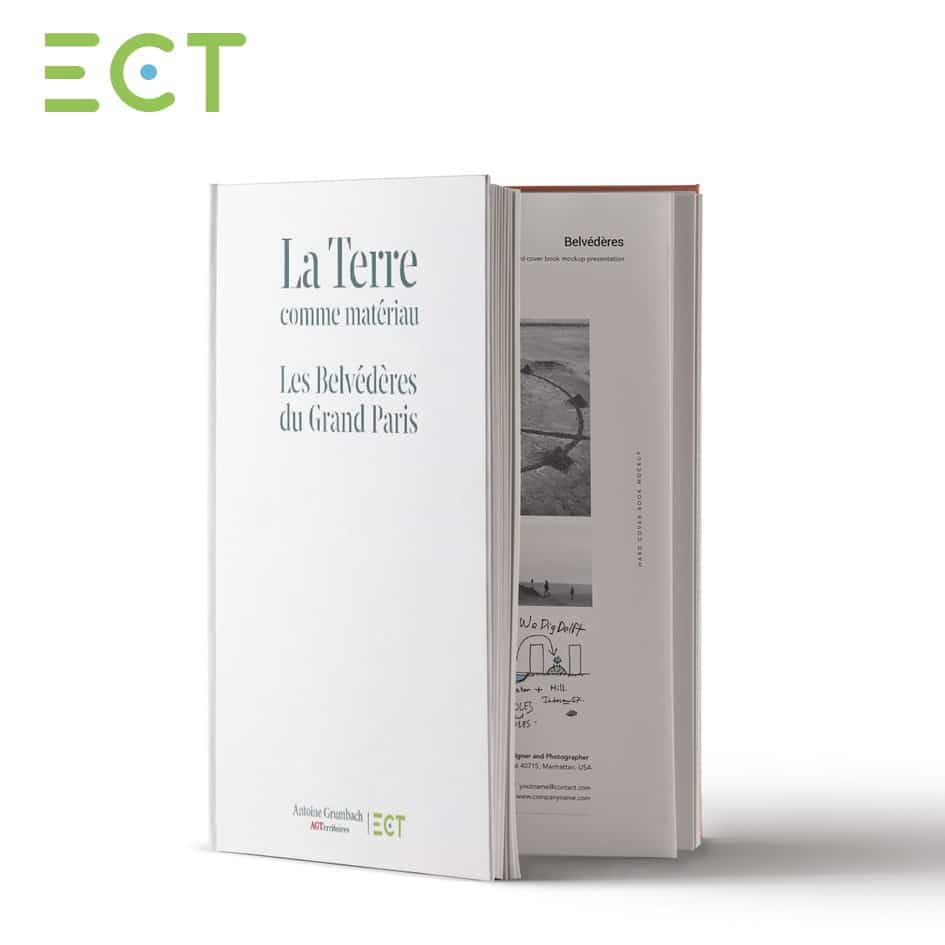
Earth as material
"The Belvederes of Greater Paris
Antoine Grumbach is an architect and urban planner. Today, he devotes his time to a reflection on Metropolitan Land Art. This reflection is fueled by the growing awareness of the volume of soil excavated by the construction industry in the Paris region.
Antoine Grumbach is convinced that earth is a wonderful material. He proclaims this in his book “La Terre comme matériau: les Belvédères du Grand Paris”.
The architect-urban planner details the project for these fabricated hills. They are a sign of a symbolic circular economy. And they stand at the very limits of the metropolis’ urbanization.
ECT shares this ambition with Antoine Grumbach. A project that’s “astonishing, intelligent, poetic, daring and useful”: the Belvederes of Greater Paris. The sketches on display illustrate these discoveries and explorations. The book reveals a laboratory of the imaginary. These Belvederes are a celebration of the fragile limits of the metropolis.
Antoine GRUMBACH, AG TERRITOIRES
Antoine Grumbach is an architect and urban planner who graduated from the Ecole des Beaux-Arts in 1967, was awarded the Grand Prix National d’Urbanisme et d’Art Urbain in 1992 and made a Chevalier de la Légion d’Honneur in 1997.
He has developed a wide-ranging practice in France and abroad, including urban urban studies, development of public spaces public spaces, transport infrastructures and architectural projects. Among his projects and achievements include the Grand Paris Seine Métropole, the Cours Mirabeau in Aix-en-Provence, BHNS downtown in Nîmes, the Paris tramway system, the Bibliothèque François Mitterrand intermodal metro station, the Sequoia Lodge Hotel at Eurodisney, Saint Quentin en Yvelines University, the bridge on London’s River Thames, the restructuring of Shanghai’s historic district and the Greater Moscow project. He taught in France for 40 years, including in the Ecoles Nationales Supérieures d’Architecture de Paris La Villette and Paris Belleville, at the Ecole Nationale des Ponts et Chaussées and universities from Harvard, Princeton, Essex and Toronto as visiting profesor. At present is a consultant on metropolitan issues with AGTerritoires, of which he is the founder.
